Covid-19: What has it meant for the 'busiest' trains?
- Published
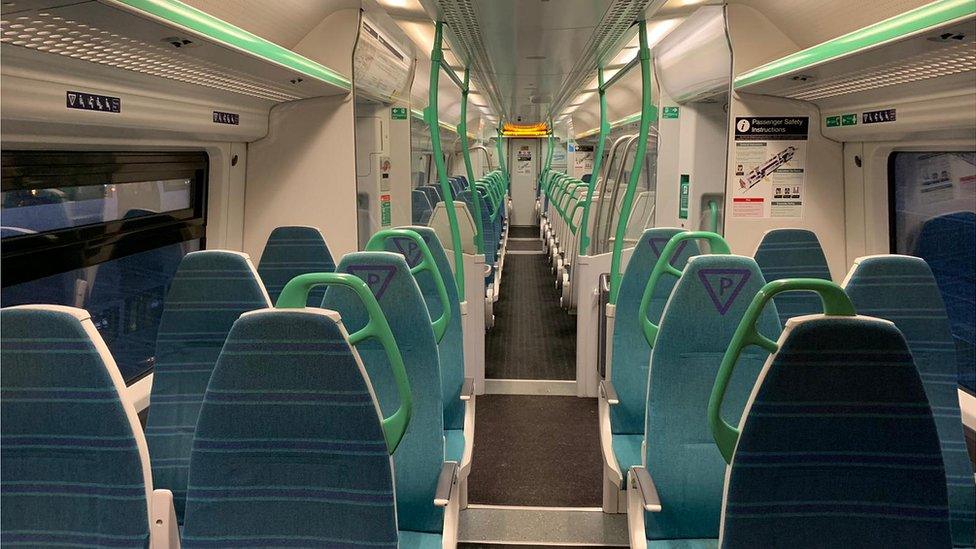
The operator thought the 07:16 between King's Lynn and Cambridge might be busy. On that stretch, the train is limited to just four carriages.
Newly released figures have revealed the 10 most overcrowded trains in England and Wales. Among them was the 07:16 service from King's Lynn, in Norfolk, into London King's Cross. But has coronavirus changed things?
Spoiler alert. It has.
The data released by the Department for Transport on Thursday, external suggested nearly one in five train passengers had to stand due to overcrowding during the morning rush hour.
But these latest figures are for last autumn and seem to reflect a different world from today's Covid-19 reality.
Great Northern, which runs the King's Lynn to King's Cross service, had told us it had already been working hard to reduce crowding before the pandemic struck.
The government's figures show the service was running at 165% capacity when it was measured last year.
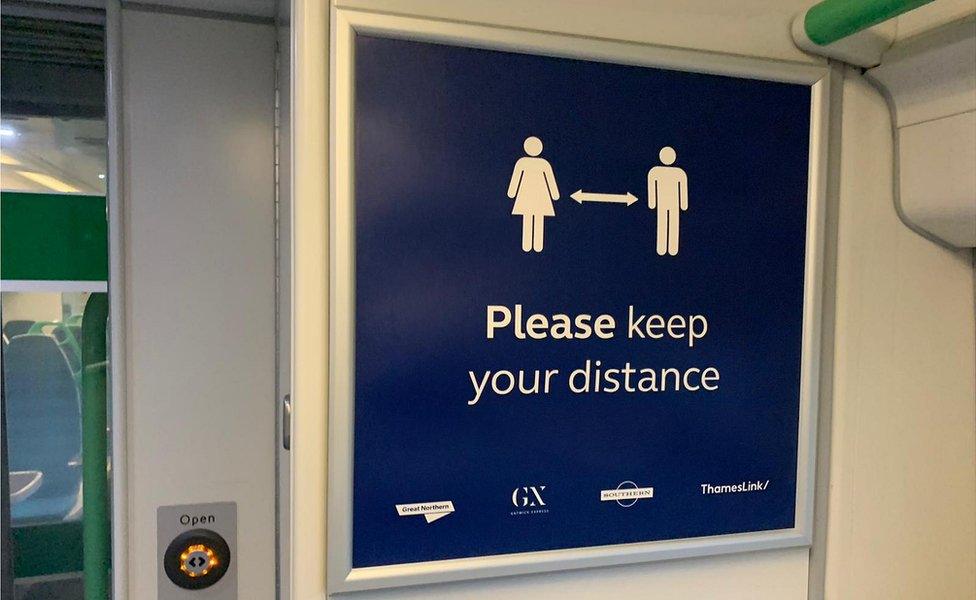
The operator had warned us that the 07:16 between King's Lynn and Cambridge was likely to be busy because it is limited to four carriages
The operator was expecting the 07:16 between King's Lynn and Cambridge to be busy on this rainy Friday morning. On that stretch, the train is limited to just four carriages.
At Watlington, a handful of mainly young people boarded the train followed by about 20 or so at Downham Market, a similar number at Littleport and then again at Ely.
Those boarding were mainly pupils and students making their way into Cambridge.
And sure enough, at Cambridge, most of the passengers alighted, with very few boarding the train. It is at Cambridge the size of the train doubles, as it reverses to collect a further four carriages before resuming its route towards London.
At the garden city of Letchworth, in Hertfordshire, just a couple of people joined the service. This despite Letchworth being an established commuter base which before the pandemic could see up to 2,000 commuters heading into London each weekday, external.

On the train: BBC reporter Rob Sykes

BBC reporter Rob Sykes experienced something he never has before on this morning's journey - an early departure
I had been asked to speak with people outside King's Lynn station before the train departed to learn something of their day-to-day experiences of using the service.
Fine in principle, but there was barely anybody there.
And then the train left early, something I don't think has ever happened to me on a train in this country before.
What I did notice was that the bulk of passengers between King's Lynn and Cambridge were young people, pupils going to school and others either going to college or to work.
The make-up of the passengers changed completely at Cambridge, when children and young people were replaced by older people.
Some of them were most likely commuters but I didn't see many laptops out, which is usually the tell-tale signature of people heading into work.
At times I felt like I was the only person on the carriage. There were other people around, but it was very quiet.
When we got into King's Cross I stood back to see how many people got off.
There was no surge of passengers heading for the exit gates. It really wasn't busy at all.

Jenny Saunders, Great Northern's customer services director, said: "Thanks to the extra services and longer trains we introduced through the Thameslink Programme, crowding has been reduced with only this one train in the top 10 list last autumn.
"Far fewer people are travelling now because of the Coronavirus pandemic. However, we expect to increase the train in length from eight carriages to 12 by next year, providing 50% more seats."

Analysis: By Daniel Wainwright, BBC England Data Unit
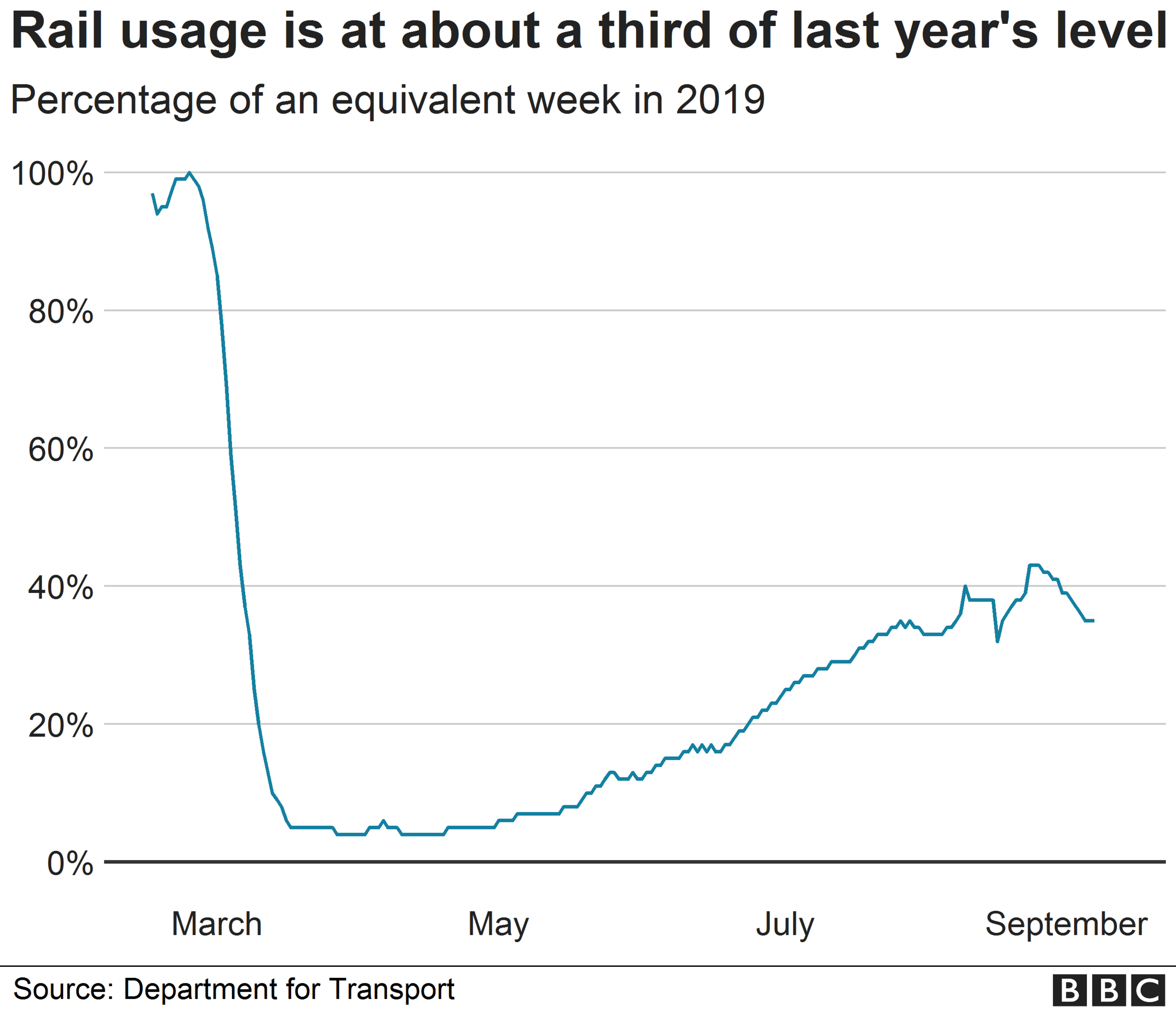
The overcrowding described in the new report from the Department for Transport (DfT) feels like a very long time ago, but was only last autumn.
To compile its list of the 10 most overcrowded trains the government counted passengers during the busiest times of day.
However, it stressed the top 10 did not represent general conditions on the railway. Overall, the number of passengers standing at peak times had come down very slightly, from 16.8% the year before to 16.4%.
The DfT pointed out that its figures on the most overcrowded services were "not always robust" because of fluctuations in numbers from day to day. Also, some of the busiest trains were only counted once.
The eight-carriage 07:16 King's Lynn to King's Cross was at 165% capacity, but this was an average based on several counts so is a bit more robust an estimate.
The DfT says plans for it to become a 12-carriage train, with a 50% increase in seats, should alleviate crowding.

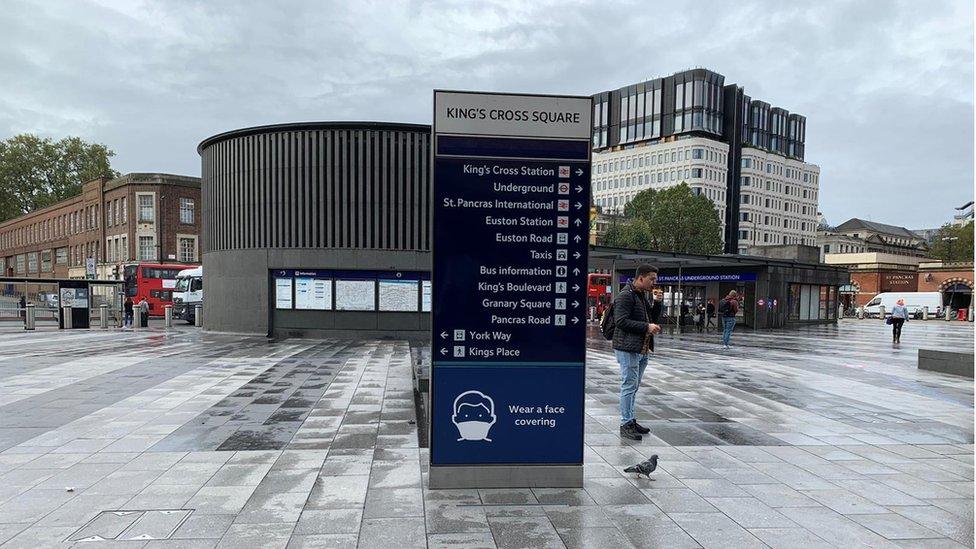
The days of the rush to the exit gates at London King's Cross are on hold... for now

The most overcrowded trains in England and Wales
These are the 10 trains with the highest number of standard class passengers as a percentage of the maximum allowable capacity at the busiest calling point on the route. Some services were observed only once.
08:02 Oxford to London Marylebone (Chiltern Railways): 196%
07:32 Woking to London Waterloo (South Western Railway): 182%
07:38 Enfield Town to London Liverpool Street (London Over ground): 180%
15:08 Weymouth to Gloucester (Great Western Railway): 178%
18:30 London Waterloo to Portsmouth Harbour (South Western Railway): 174%
05:50 Wolverhampton to London Euston (West Midlands Trains): 171%
05:43 Portsmouth Harbour to London Waterloo (South Western Railway): 169%
07:14 Alton to Waterloo (South Western Railway): 168%
907:29 Chingford to London Liverpool St. (London Over ground): 166%
07:16 King's Lynn to King's Cross (Great Northern): 165%
Source: Department for Transport


A SIMPLE GUIDE: How do I protect myself?
AVOIDING CONTACT: The rules on self-isolation and exercise
LOOK-UP TOOL: Check cases in your area
MAPS AND CHARTS: Visual guide to the outbreak
VIDEO: The 20-second hand wash

Find BBC News: East of England on Facebook, external, Instagram, external and Twitter, external. If you have a story suggestion email eastofenglandnews@bbc.co.uk, external
- Published24 September 2020
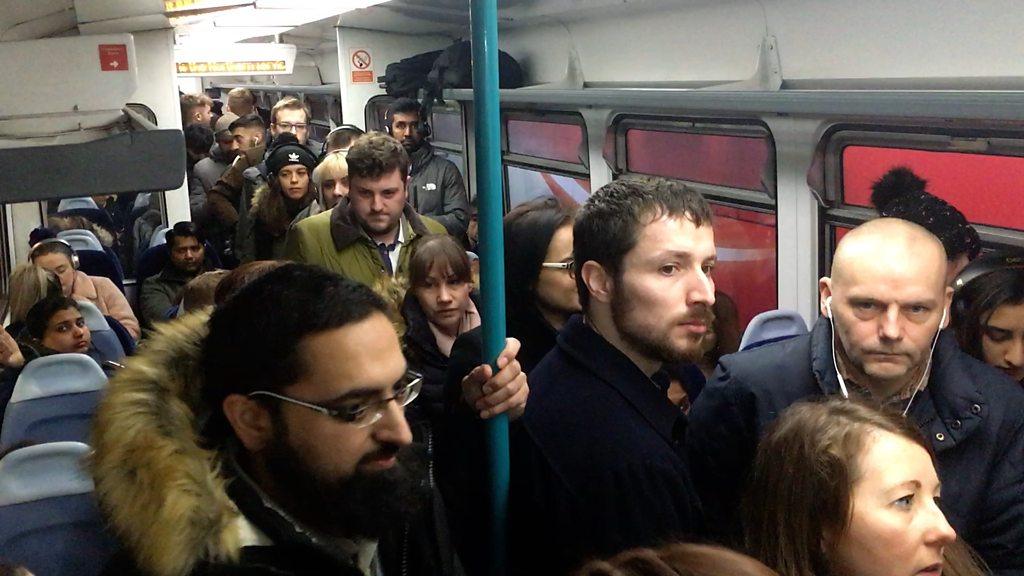
- Published26 August 2020
